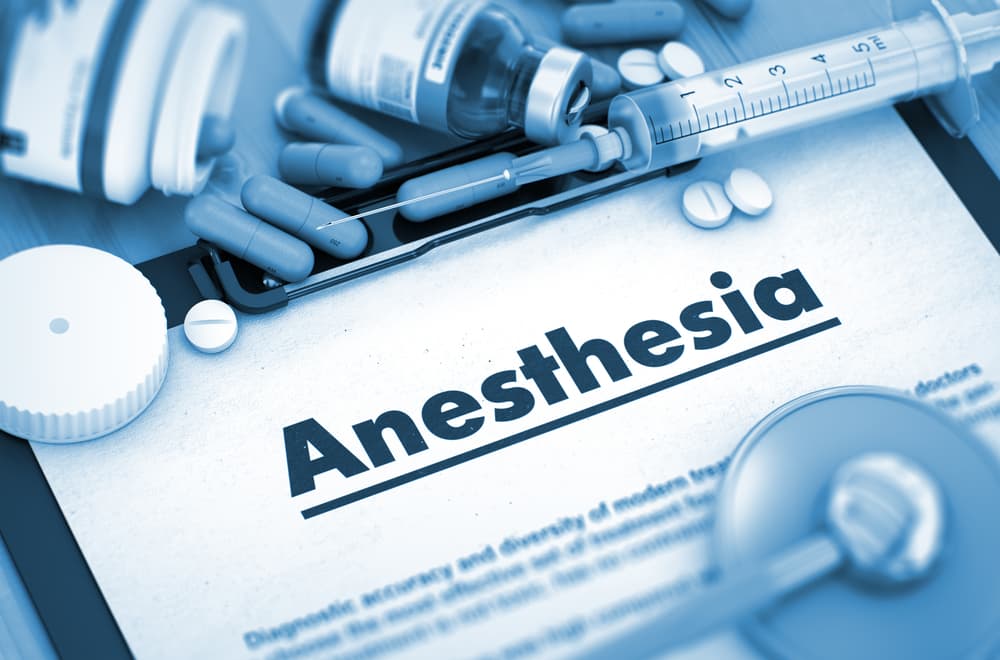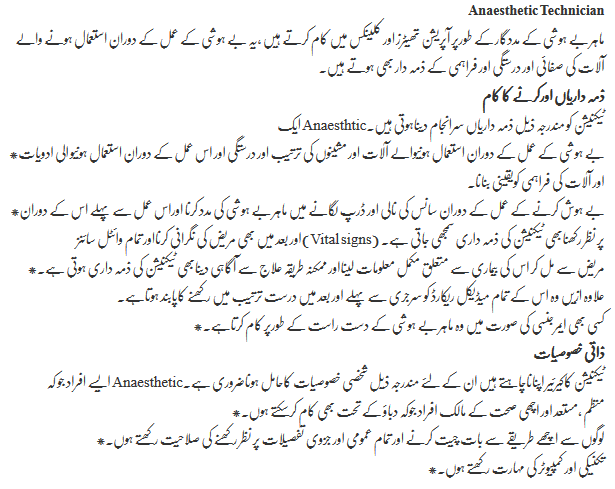We shall be talking about the main responsibilities of Anesthesia Technician Career in Pakistan throughout this entire essay. This post is the ideal resource for you to read if you want to become an anaesthesia technician and get knowledge. By giving patients anaesthesia, an anesthesiologist’s assistant helps during surgery. This is the essence of what is meant to be understood by the phrase “anaesthesia technician.”
Anesthesia Technician Role
Anaesthetic technologists are engaged in every aspect of a patient’s preoperative anaesthetic care, respecting the patient’s right to medical privacy and dignity at all times, and accounting for cultural and religious beliefs. In an emergency, anesthesiologists also contribute significantly to patient resuscitation.
Anesthesia Technician Career in Pakistan Job Opportunities

Prior to Anesthesia
The tools needed to ensure the patient is seated safely are set up by anesthesiologists.
- examining and setting up the anaesthetic apparatus
- preparing drugs for intravenous use
- Manufacturing supplies for administering intravenous treatment
- Communicate with the patient as soon as they enter the operating room and set up various equipment (such as laryngeal masks and endotracheal tubes) to preserve their airway.
- Assessing the patients’ condition while they are unconscious with the aid of anaesthetic monitoring. Examples of this type of equipment are oxygen saturation, blood pressure, and electrocardiography (ECG) devices. It could also be necessary to keep an eye on other measures, such bispectral index, EEG, and other anaesthetic depth monitors.
During the Anesthesia
The duties of an anaesthesia technician consist of:
- Obtaining and maintaining a sufficient level of anesthetic.
- Creating and maintaining an airway.
- Ensure that patients are not put into a position that would cause them pain or harm throughout their operation.
- Keeping track of the patient’s vital signs and anesthetic depth.
- Temperature control and monitoring.
- Patient (blood) sample collection and analysis
- Obtaining and using transfusion fluids and equipment.
Postoperative Anesthesia
Anesthetic technicians support the anesthetist with the following tasks:
- The patient is being awoken.
- Airway devices are being removed.
- Patients are transferred to post-operative care units.
Further activities
There are regional variances; however, anesthesia technicians may also be involved in:
- Setup, operation, and monitoring of an intra-operative intra-aortic balloon pump.
- Insertion and monitoring of a Swan-Ganz pulmonary artery catheter.
- Setup, operation, and monitoring of intraoperative blood salvage.
- Analysis of arterial blood gases, including analyzer maintenance.
- Insertion and monitoring of an arterial line
- Insertion of a peripheral IV line.
- Resuscitation by cardiopulmonary resuscitation.
- IV lines in the chest.
- A sampling of TEGs.
- Autotransfusion.
Anesthetic Technician Personal Requirements
- Communication and interpersonal skills are important.
- Ability to operate under pressure, with good technical and measuring skills.
- Capacity to interact with computers
- Methodical and well-organized.
- Able to deal with the job’s physical demands.
Anesthetic Technician Career Education and Training
To work as a qualified anaesthetic technician, one typically needs a VET certificate in anaesthesia technology. You must typically be employed in the anaesthesia department of a hospital or medical clinic, reporting to a suitably qualified supervisor, in order to be admitted to these courses. Since every institution has different requirements and courses, you should inquire with your intended college for more details.

